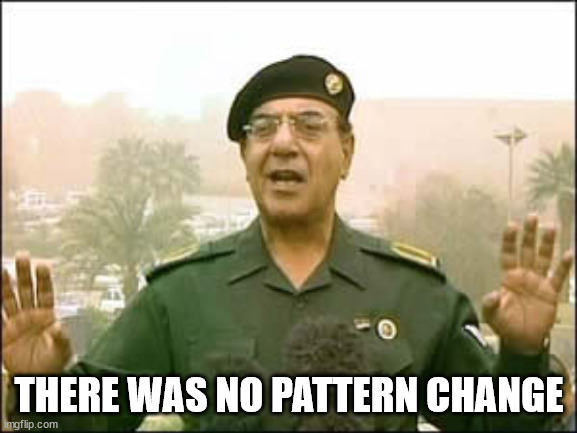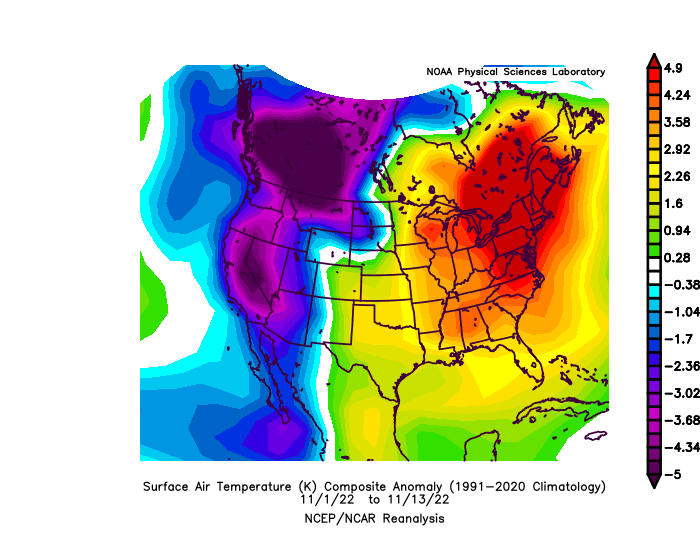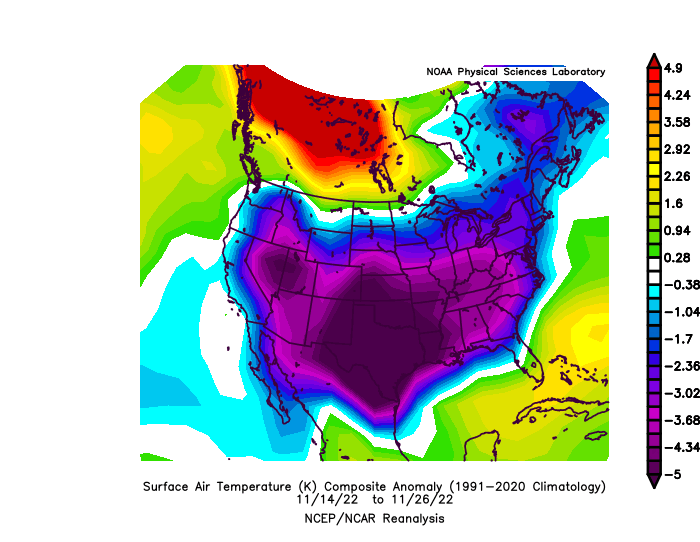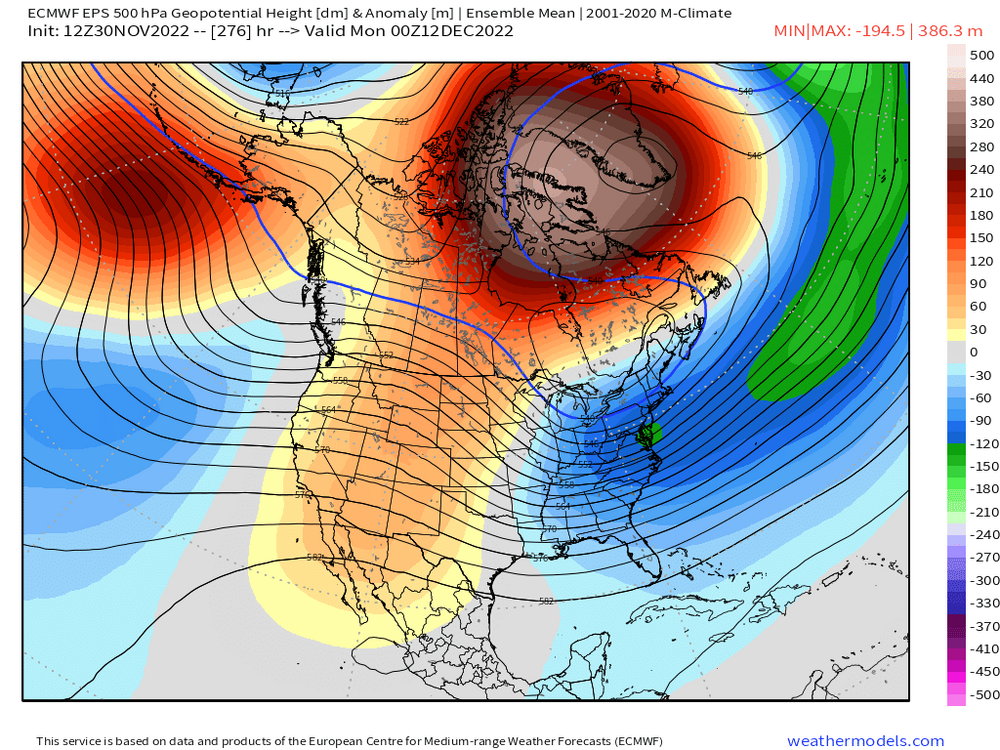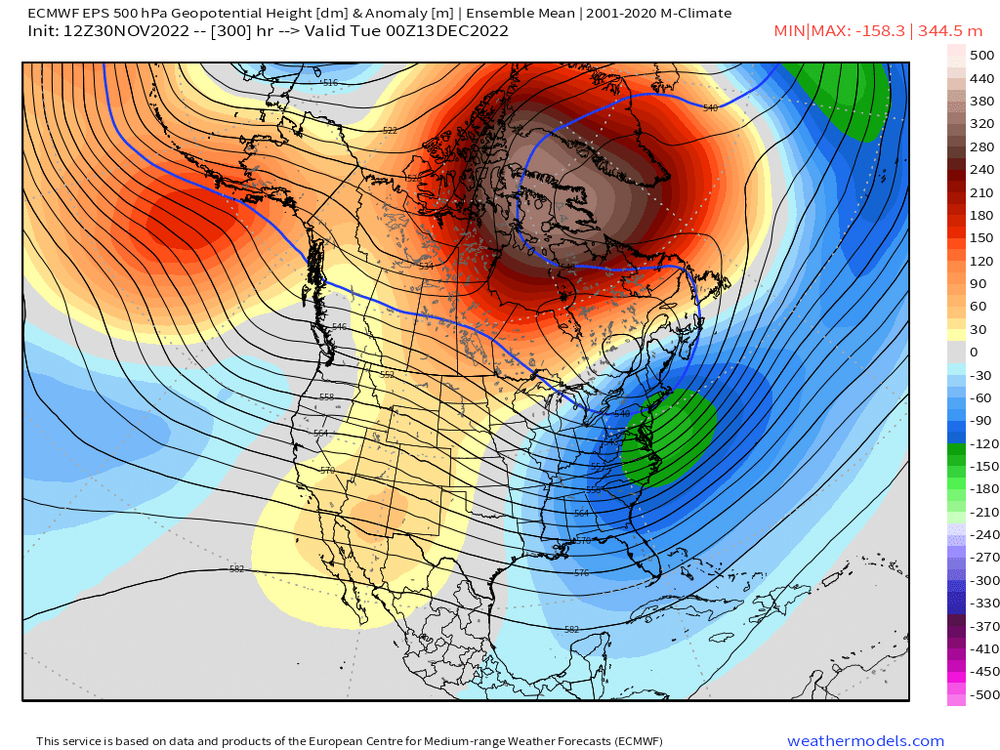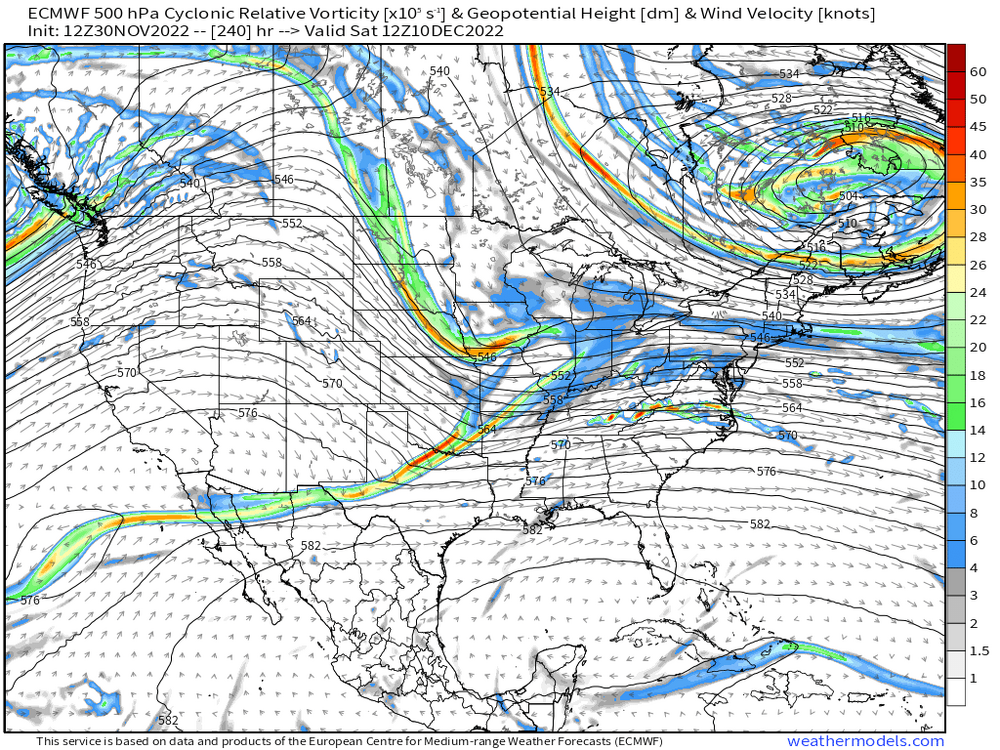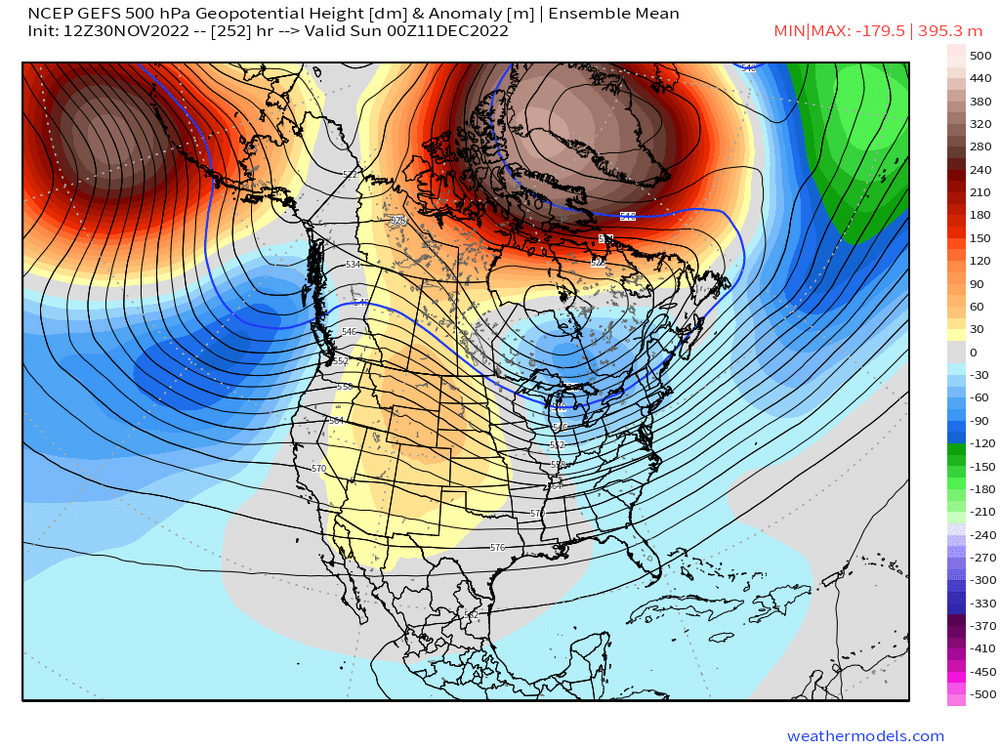-
Posts
90,955 -
Joined
-
Last visited
Content Type
Profiles
Blogs
Forums
American Weather
Media Demo
Store
Gallery
Everything posted by ORH_wxman
-
PAC almost looking slightly El-Ninoish at the end. Subtle drop in heights SW of Aleutians and pumping of heights over AK and PNA ridge region.
-
This is prob not far from the truth. Not uncommon at all for models to be all over the place until much closer on individual storm threats. Esp in a high blocking pattern.
-
Retro storm in clown range on Euro today. You’re gonna see plenty of weird solutions that appear and disappear from cycle to cycle with this pattern.
-
He really needs to move out west with some elevation....that's where the seasons match the solar insolation the most. We're significantly more lagged here.
-
Yeah it's definitely about 300-400 miles south of yesterday's 12z run. Not sure it means much though....EPS didn't trend with the block between 12z and 00z...so I'd want to see other guidance do it too.
-
GGEM was a close miss for Dec 9th....prob gonna be a lot of large run to run swings on these threats more than a week out.
-
Yeah it was intriguing that it was trending colder, but now that the trend sort of stopped....it's pretty meh. It was always tougher for us too vs NNE.
-
Dec 1961 had an epic one on Xmas eve that ended predawn hours Xmas morning. Much of the interior from ORH-eastward had 18-20+, but even the coast did well until you got to the south coast and Cape.
-
PNA spike is what you’ll want to look for when trying to get a big dog storm. We typically don’t have big dogs without a PNA ridge spike. It’s possible (like 1/12/11) but not common. Events will typically be more of the fast movers and quick redevelopers when it’s -PNA/-NAO
-
The following Decembers had at least one day where the AO reached -4 SD (dataset goes to 1950) 2009 1976 2010 2000 1968 1963 1950 1995 1978 1962 1966
-
It can go well too…..Feb 22-28, 1969
-
Yeah I bet we’ll have a few runs between now and end of next week that show some ridiculous solutions out in clown range. Fwiw, not exactly same evolution but the “blocky fujiwara” type development happened in the already-mentioned Dec ‘81 storm http://www.meteo.psu.edu/fxg1/NARR/1981/us1206.php#picture
-
It’s not just that +20 didn’t continue, we reversed the departures and were below normal for the better part of 2 weeks. I’m not sure how Bretton Woods not being buried by the end of November is relevant to the discussion outside of ski enthusiasts who were planning a trip for 11/28-30 when we warmed back up. There were already plenty of ski resorts opening during that pattern shift posted in the ski thread so they took advantage for sure. Let’s not play the anecdotal game where any of us can write a narrative. Sticking to empirical metrics, the pattern was very different on a large scale than the beginning of the month. The numbers are what they are.
-
NAO blocks can reload too after a period of decay. That definitely happened in 2010-2011…even after the monster block (with a couple reloads) finally broke down after the 1/12/11 storms, we got some mini-reloads…a more east-based block formed ahead of the 1/27/11 system.
-
By definition a block is decaying as soon s it reaches peak strength. But the decay stage can last a long time...even weeks sometimes. Sometimes you get little reloads too.
-
Yeah and I wonder if we get multiple shots at this....that first window is still kind of early in the pattern. Historically, the better shot would be when the block is kind of decaying which would be more like beyond 12/15. But we've seen multiple storms before in a big NAO block regime. Feb 2021 is one example....March 2018 is another.
-
That look around Dec 12-13 is starting to get really good....not just general pattern-wise...but that's very threatening for a big system when you get the Rockies ridge popping coinciding with the Atlantic look there
-
Dec 1960 was one of the all time early season KU doozies, but it wasn’t the same pattern as we have coming up. Didn’t have an NAO block. It did have a temporary 50/50 low though which is what the NAO blocks usually help out with (keeping the 50/50 low in place)…and huge western ridge that went all the way up the Arctic Ocean.
-
Yeah and these dates could move all over the place given that the models won't "see" some of these shortwaves....either that or they manifest/eject from their original location in a different manner than the models thought at further lead time. I mean, just as en example, the OP Euro in clown range at D10 is ready to try and pop an OH valley---> NJ coastal type model.....which is prob one of the few types of coastals that could be supported in the still-high gradient pattern there which I don't have to tell you (582dm heights hanging out over N FL fighting the slowly retreating PV lobe to our north)
-
Dec '81 is actually not a terrible analog either for this pattern. I think late Dec '10- early Jan '11 is a better one, but Dec '81 had that block dominating the pattern for weeks. Parts of Dec 1995 are a good match too.
-
Euro is still mostly rain for Dec 6 system....but there is a bit of ice/snow for NNE this run. That's pretty close though to being something more wintry for a lot of the region....would need another 100-200 miles press on that PV lobe in hudson bay which is certainly doable at D5-6. However, the follow up wave is more intriguing to me....would still be a fast mover, as the gradient hasn't relaxed yet, but that one looks like it could produce something wintry if gradient doesn't grind it up. That would be in the Dec 8-9 range.
-
I wasn't talking about you btw....your view of whether this upcoming pattern is favorable or not is not tied to D10-15 OP GFS runs. The satire of the SE NH/S ME/Essex county MA screwzone was a different topic....
-
You can see why some people jump off the tobin when the OP models don't show snowstorms....all you have to do is look at the inverse reactions when there's a huge storm at 300 hours.
-
GEFS are trying to get that Dec 11 period in a favorable look for a larger type storm....a few days ahead of previous runs and particularly the EPS. GEFS pop that Rockies ridge which is very bullish signal for a coastal given the block already in place





